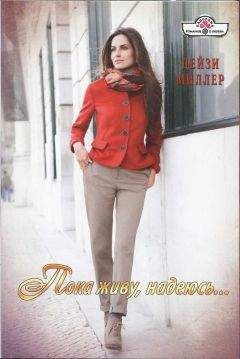Ричард Овери - Сталин и Гитлер
Vardys, V. The Baltic States under Stalin: the First Experience 1939–1941’, in K. Sword (ed.) The Soviet Takeover of the Polish
Eastern Provinces 1939–1941 (London, 1991), pp. 268–90.
Vieler, E. H. The Ideological Roots of German National Socialism (New York, 1999).
Viola, L. The Best Sons of the Fatherland: Workers in the Vanguard of Soviet Collectivization (New York, 1987).
Viola, L. (ed.) Contending with Stalinism: Soviet Power and Popular Resistance in the 1930s (Ithaca, NY, 2002).
Viola, L. Peasant Rebels under Stalin: Collectivization and the Culture of Peasant Resistance (New York, 1996).
Volkogonov, D. Stalin: Triumph and Tragedy (London, 1991).
Volkogonov, D. Trotsky: the Eternal Revolutionary (London, 1996).
Volkov, V. K. ‘Soviet-German Relations during the Second Half of 1940’, Voprosii istorii, 2 (1997), pp. 3–18.
Vopel, S. ‘Radikaler, völkischer Nationalismus in Deutschland 1917–1933’, in H. Timmermann (ed.) Nationalismus und
Nationalbewegung in Europa 1914–1945 (Berlin, 1999).
Vorländer, H. Die NSV: Darstellung und Dokumentation einer nationalsozialistischen Organisation (Boppard am Rhein, 1988).
Vorsin, V. F. ‘Motor Vehicle Transport Deliveries through “Lend-Lease”’, Journal of Slavic Military Studies, 10 (1997), pp.?
Voslensky, M. Nomenklatura: Anatomy of the Soviet Ruling Class (London, 1984).
Wachsmann, N. ‘“Annihilation through Labor”: The Killing of State Prisoners in the Third Reich’, Journal of Modern History, 71
(1999), pp. 624–59.
Watson, D. Molotov and Soviet Government: Sovnarkom, 1930–41 (London, 1996).
Wegner, B. (ed.) From Peace to War: Germany, Soviet Russia and the World 1939–1941 (Providence, RI, 1997).
Wegner, B. Hitlers politische Soldaten: Die Waffen-SS 1933–1945 (Paderborn, 1992).
Weinberg, R. ‘Purge and Politics on the Periphery: Birobidzhan in 1937’, Slavic Review, 52 (1993), pp. 13–27.
Weindling, P. Health, Race and German Politics between National Unifi cation and Nazism 1870–1945 (Cambridge, 1989).
Weiner, A. The Making of a Dominant Myth: the Second World War and the Construction of Political Identities within the Soviet
Polity’, Russian Review, 55 (1996), pp. 638–60.
Weiner, A. Making Sense of War: The Second World War and the Fate of the Bolshevik Revolution (Princeton, NJ, 2001).
Weiner, A. ‘Nothing but Certainty’, Slavic Review, 61 (2002), pp. 44–53.
Weisbrod, B. ‘Violence and Sacrifi ce: Imagining the Nation in Weimar Germany’, in H. Mommsen, (ed.) The Third Reich between
Vision and Reality: New Perspectives on German History 1918–1945 (Oxford, 2001), pp. 5–22.
Weitz, E. D. ‘Racial Politics without the Concept of Race: Reevaluating Soviet Ethnic and National Purges’, Slavic Review, 61 (2002),
pp. 1–29.
Weitz, J. Hitler’s Banker: Hjalmar Horace Greeley Schacht (London, 1998).
Welch, D. (ed.) Nazi Propaganda (London, 1983).
Welch, D. Propaganda and the German Cinema (London, 2001).
Wellers, G. Les chambers à gaz ont existé: Des documents, des temoignages, des chiffres (Paris, 1981).
Werle, G. Justiz-Strafrecht und polizeiliche Verbrechenskämpfung im Dritten Reich (Berlin, 1989).
Werth, A. Russia at War 1941–1945 (London, 1964).
Wheatcroft, S. ‘More Light on the Scale of Repression and Excess Mortality in the Soviet Union in the 1930s’, in J. A. Getty and R.
Manning (eds) Stalinist Terror: New Perspectives (Cambridge, 1993), pp. 275–90.
Wieczynski, J. (ed.) Operation Barbarossa: the German Attack on the Soviet Union, June 22 1941 (Salt Lake City, 1993).
Wiesen, S. J. ‘Morality and Memory: Refl ections on Business Ethics and National Socialism’’, Journal ofHolocaust Education, 10
(2001), pp. 60–82.
Wild, D. Fragments of Utopia (London, 1998).
Wilhelm, F. Die Polizei im NS-Staat: Die Geschichte ihre Organisation im Überblick (Paderborn, 1997).
Wilhelm, H.-H. (ed.) Rassenpolitik und Kriegsführung: Sicherheitspolizei und Wehrmacht in Polen und der Sowjetunion (Passau,
1991).
Winkler, D. Frauenarbeit im ‘Dritten Reich’ (Hamburg, 1977).
Winkler, H. A. Der Weg in die Katastrophe: Arbeiter und Arbeiterbewegung in der Weimarer Republik 1930 bis 1933 (Berlin,
1987).
Wolf, N. Kirchner (London, 2003).
Woll, H. Die Wirtschaftslehre des deutschen Faschismus (Munich, 1988).
Wysocki, G. Die Geheimestaatspolizei im Land Braunschweig (Frankfurt am Main, 1997).
Yakupov, N. M. ‘Stalin and the Red Army’, Istoriia SSSR, 5 (1991), pp. 170–76.
Yedlin, T. Maxim Gorky: a Political Biography (Westport, Conn., 1999).
Yekelchyk, S. The Making of a “Proletarian Capital”: Patterns of Stalinist Social Policy in Kiev in the mid-1930s’, Europe – Asia
Studies, 50 (1998), pp. 1229–44.
Young, G. Power and the Sacred in Revolutionary Russia: Religious Activists in the Village (University Park, Pa., 1997).
Young, J. W. Totalitarian Language: Orwell’s Newspeak and its Nazi and Communist Antecedents (Charlottesville, Va., 1991).
Zaleski, E. Planning for Economic Growth in the Soviet Union 1918–1932 (Chapel Hill, NC, 1962).
Zaleski, E. Stalinist Planning for Economic Growth 1933–1952 (London, 1980).
Zarubinsky, O. ‘Collaboration of the Population in Occupied Ukrainian Territory: Some Aspects of the Overall Picture’, Journal of
Slavic Military Studies, 10 (1997), pp. 138–52.
Zayas, A. M. de The Wehrmacht War Crimes Bureau, 1939–1945 (Lincoln, Nebr., 1989).
Zehnpfennig, B. Hitler’s Mein Kampf: Eine Interpretation (Munich, 2000).
Zeidler, M. Reichswehr und Rote Armee 1920–1933 (Munich, 1993).
Zelenin, I. The Implementation of Politics of the Elimination of the Kulaks as a Class (Autumn 1930–1932)’, Istoriia SSSR, 6 (1990),
pp. 172–91.
Zeman, Z. Nazi Propaganda (Oxford, 1973).
Zetterling, N. ‘Loss Ratios on the Eastern Front during World War IF, Journal of Slavic Military Studies, 9 (1996), pp. 895–906.
Zhukrai, V. Stalin: Pravda i loch’ (Moscow, 1996).
Ziegler, H. F. Nazi Germany’s New Aristocracy: the SS Leadership, 1925–1939 (Princeton, NJ, 1989).
Ziemann, B. ‘Germany after the First World War – A Violent Society?’ Journal of Modern European History, 1 (2003), pp. 80–95.
Zitelmann, R. Hitler: the Politics of Seduction (London, 1999).
Zuckermann, F. S. The Tsarist Secret Police in Russian Society, 1880–1917 (London, 1996).
Примечания
Введение
1. H. Kohn The Twentieth Century: a Midway Account of the Western World (London, 1950), p. 65.
2. T. Todorov Hope and Memory: Refl ections on the Twentieth Century (London, 2003), pp. 75–7.
3. Todorov, Hope and Memory, p. 82.
4. A. Besançon ‘Nazisme et communisme, également criminels’, Vest européen, 35 (1997), pp. 3–6. See also W. Dlugoborski ‘Das Problem des Vergleichs von Nationalsozialismus und Stalinismus’ in D. Dahlmann and G. Hirschfeld (eds) Lager, Zwangsarbeit, Vertreibung und Deportation (Essen, 1999), pp. 19–28; E. Jahn’Zum Problem der Vergleichbarkeit von Massenverfolgung und Massenvernichtung’ in ibid., pp. 29–51.
5. S. Courtois, N. Werth, et al. The Black Book of Communism: Crimes, Terror, Repression (Cambridge, Mass., 1999).
6. D. Rayfi eld Stalin and his Hangmen (London, 2004). On Hitler, R. G. Waite The Psychopathie God: Adolf Hitler (New York, 1978); E. H. Schwaab Hitler’s Mind: A Plunge into Madness (New York, 1992); F. Redlich Hitler: Diagnosis of a Destructive Prophet (Oxford, 1999), esp. ch. 9.
7. A. Bullock Hitler and Stalin: Parallel Lives (London, 1991).
8. On Hitler there is the standard two-volume biography by I. Kershaw Hitler: Hubris 1889–1936 (London, 1998) and Hitler: Nemesis 1936–1945 (London, 2000). On Stalin, D. Volkogonov Stalin: Triumph and Tragedy (London, 1991); S. Sebag Montefi ore Stalin: The Court of the Red Tsar (London, 2003).
9. On Germany see M. Burleigh The Third Reich: a New History (London, 2000); on the Soviet Union, R. Service A History of Twentieth-Century Russia (London, 1997).
10. R. H. McNeal Stalin: Man and Ruler (London, 1988), p. 237.
11. F. Genoud (ed.) The Testament of Adolf Hitler (London, 1960), p. 100, entry for 26 February 1945.
12. H. Heiber and D. M. Glantz (eds) Hitler and His Generals: Military Conferences 1942–1945 (London, 2003), p. 388, meeting of the Führer with General Reinecke, 7 January 1944.
13. On Stalin see E. van Ree The Political Thought of Joseph Stalin (London, 2002). On Hitler, R. Zitelmann Hitler: the Politics of Seduction (London, 1999); F. L. Kroll Utopie als Ideologie: Geschichtsdenken und politisches Handeln im Dritten Reich (Paderborn, 1998).
14. On German infl ation G. Feldman The Great Disorder: Politics, Economics, and Society in the German Infl ation 1914–1924 (Oxford, 1993); on Soviet infl ation L. E. Hubbard Soviet Money and Finance (London, 1936), chs. 1, 4.
15. V. Serge, The Case of Comrade Tulayev (London, 1968), p. 88.
Глава 1
1. A. Hitler Mein Kampfe ed. D. C. Watt (London, 1969).
2. R. Service Lenin (London, 2000), pp. 462–5.
3. Service, Lenin, p. 467; E. Radzinsky Stalin (London, 1996), pp. 193–4.
4. Service, Lenin, p. 469.
5. B. Bazhanov Avec Staline dans le Kremlin (Paris, 1930), p. 43.
6. D. Volkogonov Stalin: Triumph and Tragedy (London, 1991), pp. 93–4; Bazhanov, Avec Staline dans le Kremlin, p. 48.
7. E. Hanfstaengl Hitler: the Missing Years (London, 1957), p. 108.
8. L. Gruchmann and R. Weber (eds) Der Hitler-Prozess 1924: Wortlaut der Hauptverhandlung vor den Volksgericht München
(4 vols, Munich, 1997) vol. i, pp. xxxv – xxxvii.
9. O. Gritschner Der Hitler-Prozess und sein Richter Georg Neithardt (Munich, 2001), p. 42.
10. Gruchmann and Weber, Der Hitler-Prozess, vol. iv, p. 1591.
11. Hanfstaengl, Hitler, p. 114; W. R. Hess (ed.) Rudolf Hess: Briefe, 1908–1933 (Munich 1987), p. 322, letter from Hess to Use Pröhl, 12 May 1924.
12. Gritschner, Der Hitler-Prozess, p. 62.
13. On Stalin, W. Duranty Stalin and Co: The Politburo and the Men who Rule Russia (London, 1949), p. 39; on Hitler, Imperial War
Museum, Speer Collection, Box 369, Part III, exploitation of Albert Speer, ‘Adolf Hitler’, 19 Oct 1945, p. 19. See too, T. Junge Until the Final Hour. Hitler’s Last Secretary (London, 2003), p. 130, who recalled Hitler’s comment after the bomb exploded at his headquarters in July 1944: ‘Well, ladies, everything turned out all right again. Yet more proof that Fate has chosen me for my mission.’ See too, W. S. Allen (ed.) The Infancy of Nazism: The Memoirs of Ex-Gauleiter Albert Krebs 1923–1933 (New York, 1976), p. 181: ‘Providence,’ Hess told Krebs in 1931, ‘has always inspired him [Hitler] to do the right thing.’




